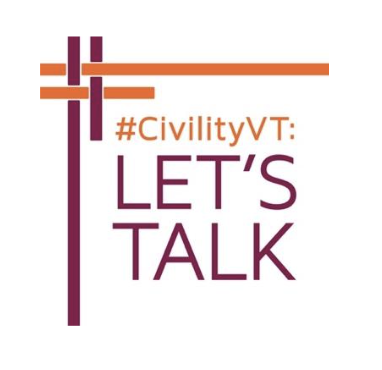ACTIVE LISTENING

Now that we have spent some time thinking about what civility means, we are going to move on to active listening. With this move, we are zeroing in on civil discourse, while acknowledging that other forms of civility do exist.
Please reflect on these questions as we get started:
- What does active listening mean to you?
- Have you used these concepts in your personal and/or work life?
Let’s explore a few active listening tips and techniques, as well as a few examples of these techniques in practice!
Let’s begin with a fun, popular example of active listening. What are your immediate takeaways from the example? What can we learn from this exchange between Sheldon and Amy?
While Amy utilized several active listening techniques, it was not very authentic. Of course, she did not have a very attentive counterpart in Sheldon. Active listening techniques require two-way participation, with constant attentiveness, respect, and transparency throughout the process. Let’s watch another video now, which will break down some step-by-step tips for successful active listening.
When Thomas and Lydia finally got around to it, they actually had a good conversation that exemplified many key techniques! Let’s break down some of the things they did well. Click through the tabs below to learn more about each topic.
Ask probing questions to better understand, and remain open minded. In the example above, Lydia and Thomas asked multiple questions to one another, in order to gain a better sense of each other’s backgrounds, experiences, and perspectives.
Be ready to really listen. Lydia and Thomas displayed attentiveness and focus, with appropriate body language, verbal cues, and clear interest in the conversation.
Describe your own views but do not make assumptions around others. Since Thomas and Lydia hold varying perspectives and experiences, they intentionally explained their personal values and beliefs, without including personal biases and assumptions. Instead of making these assumptions, Thomas and Lydia asked one another clarifying questions!
Suspend judgement, but do question assumptions and respectfully interrogate. After a few judgmental moments at the beginning of the conversation, Lydia and Thomas slowly let go of their assumptions and biases. Instead, they developed a respectful space to ask questions and learn, instead of judge one another and remain closed-minded.
Aim to provide substantive arguments and explanations for your opinions. Lydia explained her reasons for becoming vegetarian, which encouraged an open and informative space to learn and evolve. Thomas explained his perspective as well, which allowed both opinions to be based on reason, and subsequently validated and valued.
Aim to speak honestly, and avoid hidden agendas. Thomas and Lydia remained open about their beliefs, with the acceptance of disagreement. Politeness should never mask authenticity, and Thomas and Lydia appropriately demonstrated this practice.
Seek consensus while accepting that you are unlikely to agree on everything. While Thomas and Lydia did not ultimately reach consensus across every topic, they reached a broader understanding and established meaningful common ground with one another. The conversation ended on a positive note, with the potential for future conversations to build upon this instance of civil discourse.
Let’s look at another example of active listening. We suggest that you write down any ways in which you think Raymond is and is not practicing effective active listening.
Comfortable, consistent eye contact shows engagement and interest in the conversation. It’s a great active listening technique!
When engaging in active listening, your body position says a lot! Leaning slightly forward and maintaining an open body position can signify active listening.
Nods, smiles, and other subtle affirmations can serve as supportive indicators to the speaker.
Words such as ‘hmm,’ ‘okay,’ and, ‘go on’ are great indicators of active listening!
Please note that body language may be culturally relative, or not universally interpreted in the same way. Awareness of body language remains important nonetheless, with undeniable impacts on civil discourse.
